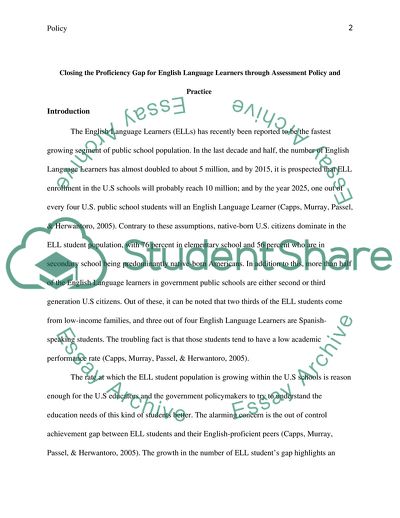Cite this document
(Closing the Proficiency Gap for English Language Learners Literature review Example | Topics and Well Written Essays - 2000 words, n.d.)
Closing the Proficiency Gap for English Language Learners Literature review Example | Topics and Well Written Essays - 2000 words. https://studentshare.org/education/1820311-policy-topic-closing-the-proficiency-gap-for-english-language-learners-through-assessment-policy-and-practice
Closing the Proficiency Gap for English Language Learners Literature review Example | Topics and Well Written Essays - 2000 words. https://studentshare.org/education/1820311-policy-topic-closing-the-proficiency-gap-for-english-language-learners-through-assessment-policy-and-practice
(Closing the Proficiency Gap for English Language Learners Literature Review Example | Topics and Well Written Essays - 2000 Words)
Closing the Proficiency Gap for English Language Learners Literature Review Example | Topics and Well Written Essays - 2000 Words. https://studentshare.org/education/1820311-policy-topic-closing-the-proficiency-gap-for-english-language-learners-through-assessment-policy-and-practice.
Closing the Proficiency Gap for English Language Learners Literature Review Example | Topics and Well Written Essays - 2000 Words. https://studentshare.org/education/1820311-policy-topic-closing-the-proficiency-gap-for-english-language-learners-through-assessment-policy-and-practice.
“Closing the Proficiency Gap for English Language Learners Literature Review Example | Topics and Well Written Essays - 2000 Words”. https://studentshare.org/education/1820311-policy-topic-closing-the-proficiency-gap-for-english-language-learners-through-assessment-policy-and-practice.


